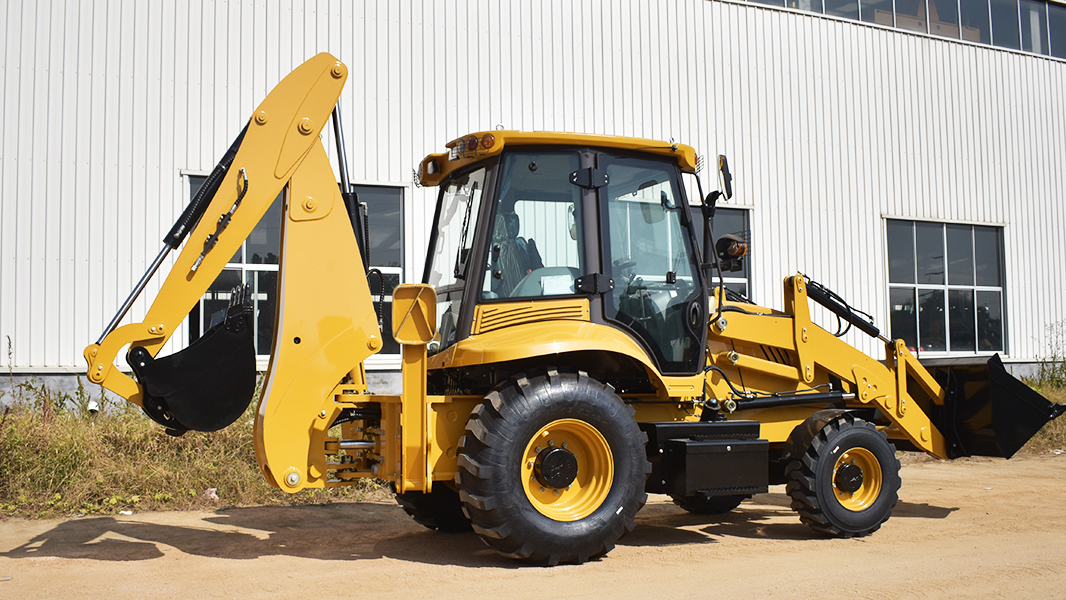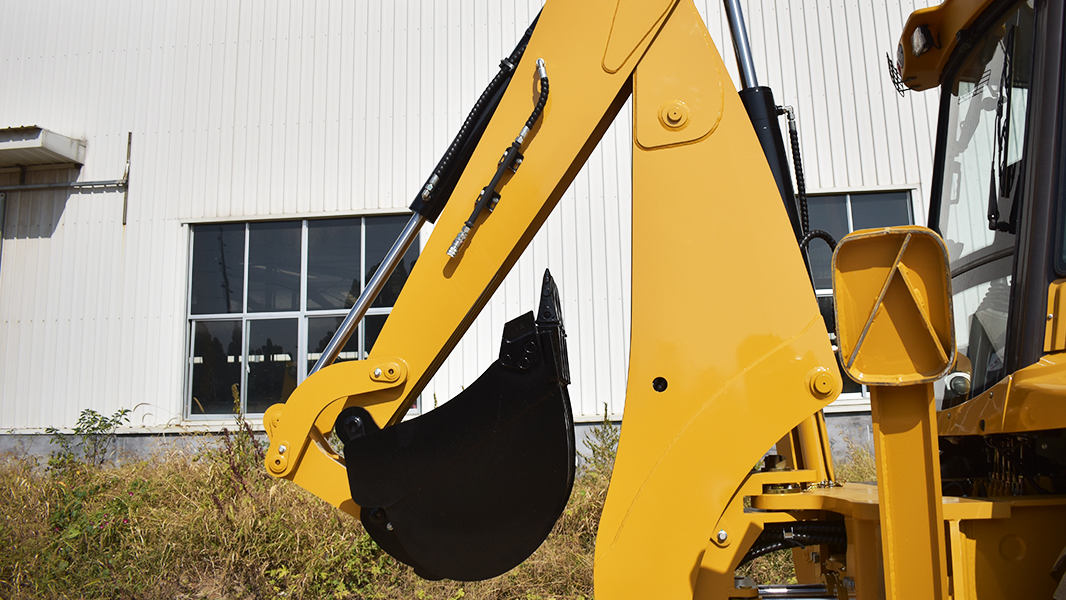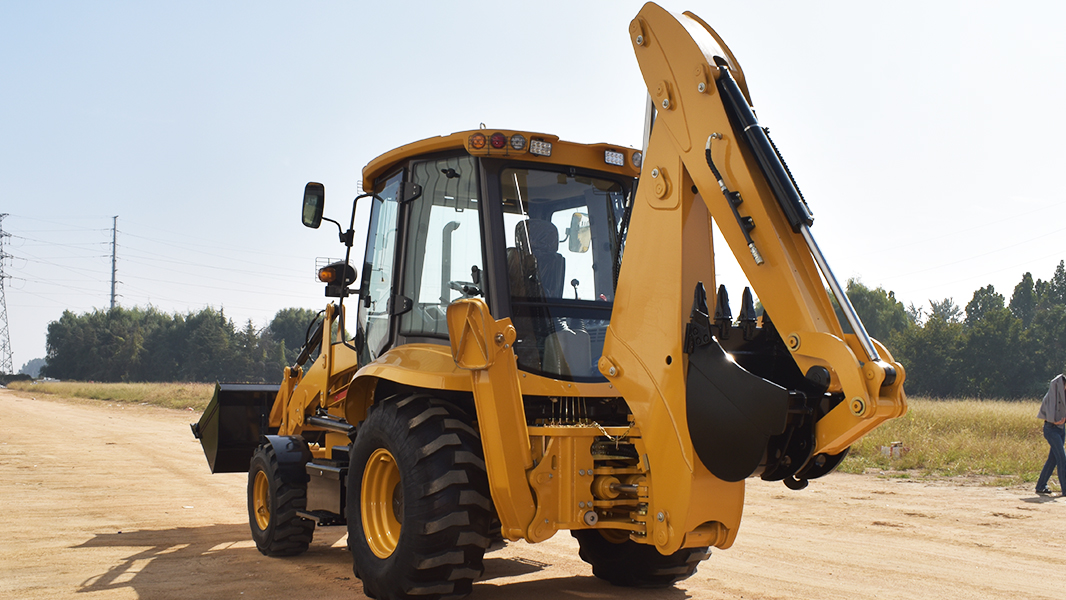I. Introduction
Loaders and backhoe loaders are ubiquitous on construction sites, material yards, and infrastructure projects, playing critical roles in moving earth, handling materials, and performing various tasks. While both feature a front-mounted bucket and share a general appearance, their fundamental designs and operational capabilities diverge significantly. This article seeks to clarify the distinction between these two versatile machines, providing a detailed comparison of their mechanics, applications, and performance characteristics. By understanding their unique strengths and limitations, professionals can make informed decisions about which machine best suits their specific project needs.
II. Fundamental Design and Mechanics
A. Loader Design:
Loaders primarily utilize a wheeled chassis with articulated steering, enabling excellent maneuverability in open spaces and efficient material transport.
The front-mounted bucket and lifting mechanism are powered by a robust hydraulic system, allowing for significant lifting capacity and efficient material handling.
Powerful engines drive the hydraulic system and wheels, providing the necessary power for heavy lifting and movement.
Loaders come in various sizes and capacities, from compact models for tight spaces to large, heavy-duty machines for massive material movement.

Backhoe loaders also feature a wheeled chassis, but with added stabilizers at the rear to provide stability during digging operations.
The front-mounted loader bucket is similar to a standard loader but often smaller, designed for both loading and some grading tasks.
The defining feature is the rear-mounted backhoe arm, capable of digging trenches, excavating, and performing precision digging tasks. The backhoe arm has a complex hydraulic system allowing for a wide range of motion.
Backhoe loaders have a dual hydraulic system powering both the front loader and the rear backhoe.
C. Comparative Analysis:
The primary structural difference lies in the addition of the backhoe arm and stabilizers on the backhoe loader. This addition necessitates a more complex hydraulic system. Loaders are designed for bulk material movement, where as backhoe loaders are designed for more versatile functions.
III. Primary Functions and Applications
A. Loader Functions and Applications:
Bulk material handling is the loader's primary function, efficiently moving large volumes of materials like gravel, sand, and aggregate.
Loading and transporting materials are crucial for site logistics, moving materials to and from trucks or stockpiles.

Site cleanup and leveling are facilitated by the loader's bucket, enabling efficient debris removal and surface preparation.
Loaders are essential in quarries, construction yards, and material processing plants, where their high-volume material handling capabilities are invaluable.
B. Backhoe Loader Functions and Applications:
Digging and trenching are the backhoe's primary functions, ideal for utility work, foundation excavation, and pipeline installation.
Material loading and handling are performed by the front loader bucket, providing versatility in moving various materials.
Utility work and maintenance are streamlined by the backhoe loader's ability to dig, load, and maneuver in confined spaces, making it ideal for urban environments and roadside maintenance.
Backhoe loaders find applications in construction, landscaping, and utility maintenance, where their versatility and compact size are advantageous.
C. Side-by-Side Comparison:
Loaders are optimized for high volume material moving, where backhoe loaders are optimized for multi function work. While both machines can load and move materials, backhoe loaders can also dig, and complete many other tasks that a loader can not.
IV. Performance and Operational Differences
A. Mobility and Maneuverability:
Loaders excel in open areas, offering high speed and efficiency in moving materials over short to medium distances.
Backhoe loaders are more versatile in confined spaces and varied terrain, thanks to their compact size and articulated steering.
Loaders typically have a larger turning radius than backhoe loaders, requiring more space for maneuvering.
B. Power and Lifting/Digging Capacity:
Loaders generally have higher lifting capacities and are designed for moving larger volumes of material.
Backhoe loaders have significant digging depth and force, enabled by their backhoe arm and stabilizers, making them ideal for excavation tasks.
The stabilizers on a backhoe loader greatly increase the digging power of the backhoe, and allow the machine to dig on uneven surfaces.
C. Operational Efficiency and Cost:
Fuel consumption and maintenance costs vary depending on machine size and usage.
Operator training and skill requirements differ, with backhoe loaders requiring proficiency in both loader and backhoe operations.
The cost of attachments must be factored into the overall operational cost.
V. Attachment Versatility and Customization
A. Loader Attachments:
Various bucket types, including general-purpose, light-material, and rock buckets, optimize loaders for specific material handling needs.
Forks and material handling attachments enable loaders to handle palletized materials and other loads.
Snow removal attachments allow loaders to be used for winter maintenance.
B. Backhoe Loader Attachments:

Backhoe buckets of various sizes, including trenching and digging buckets, optimize the backhoe for specific excavation tasks.
Augers and breakers enable backhoe loaders to drill holes and break concrete, expanding their utility.
Backhoe loaders can utilize many of the same loader attachments that a regular loader can use.
C. How Attachments Affect Usage:
Attachments greatly increase the variety of jobs each machine can complete. The correct attachment is vital for safety, and efficiency.
VI. Choosing the Right Machine: Key Considerations
A. Project Requirements and Task Priorities:
Assess the primary tasks of the project. If bulk material movement is the priority, a loader is ideal. If digging and versatile tasks are needed, a backhoe loader is more suitable.
B. Site Conditions and Accessibility:
Evaluate the terrain and space constraints. Backhoe loaders are better for confined spaces and varied terrain, while loaders are more efficient in open areas.
C. Budget and Operational Costs:
Consider purchase or rental costs, fuel consumption, maintenance, and operator training.
D. Long Term Use, and Potential Resale Value:
Consider how often the machine will be used, and the resale value of each machine.
VII. Conclusion
In conclusion, loaders and backhoe loaders serve distinct purposes in construction and related industries. Loaders excel in bulk material handling, while backhoe loaders offer versatility in digging, loading, and performing various utility tasks. Selecting the appropriate machine based on project needs, site conditions, and budget considerations is crucial for optimizing efficiency and productivity. Both machines are valuable assets, and understanding their differences ensures optimal utilization.
Post time:Mar.31.2025
